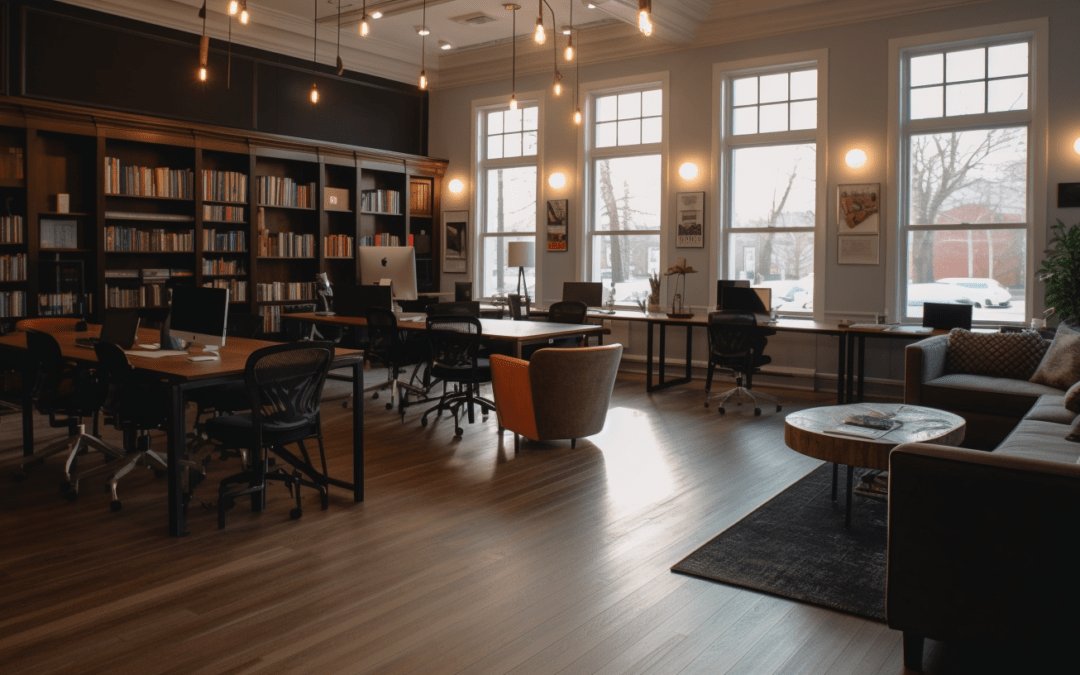Coworking spaces are somewhat rare in most small towns. In contrast, libraries are generally prominent buildings in the center of town. In the United States, there are about 17,000 locations where you can access library resources. Of those, there are about 9000 actual libraries. About 40% of these are in communities of 5000 or less, and most are struggling. Most libraries no longer have full-time services and are often maintained by non-profit groups because town budgets don’t cover the costs.
If you are old enough to remember the 1970s, there was an advertising campaign for libraries “See What’s New Besides Books”. 50 years later, they are continuing to reinvent themselves and are tapping into some trends that can enhance remote work opportunities in smaller communities.
Changing Nature of Libraries
Libraries are some of the most unique and diverse buildings in America. Few rival the New York Public Library that has been the star of multiple motion pictures including Breakfast at Tiffany’s, The Muppets Take Manhattan, and of course Ghostbusters. But there are more than a few unique gems out there.
Growing up I was a regular at the Cossitt Library. It’s a rare example of Queen Anne architecture, although I have also heard it described as Mississippi Riverboat architecture. As the building has been underutilized for many years a portion of the building is being converted to being a maker space.
The Granville Public Library is now promoting itself as a Climate Resilience Hub. It is considered a Richardsonian Romanesque building, although not designed by H.H. Richardson himself. It’s still a unique building.
And then there is the Soldiers Memorial Library in Hiram Maine, which is now also a coworking space. It’s not a new concept. Some larger libraries such as the Washington, D.C. libraries have been doing this for a while. In larger cities, it is just one of many options for coworking. Many urban libraries are well-funded and have the space and infrastructure to attract remote workers. Many larger libraries saw an increase in use from 2019 to 2023. Smaller libraries haven’t been quite so lucky.
Coworking and Libraries
For smaller communities, a library is a perfect place for a co-working space. Roughly a third of small-town libraries are open 3 days or less. Even when they are empty, you need to maintain some sense of climate control in a building filled with paper. As a result, libraries are relatively expensive buildings the less they get used.
One of the things the Soldiers Memorial Library did with their conversion was put in geothermal heating. It’s a large capital expense, but there was a grant to cover things. Long term it makes the library more sustainable. There were other capital improvements to change the way space was organized adding additional electricity and improved WiFi to support coworking.
While coffee shops may be the flavor of choice for where to work for many people, it’s not always an option in a small town. If there is a coffee shop, it’s probably focused on customers who are there for food and drink. Chances are it is a less-than-ideal space for co-working. Even small libraries often have spaces suitable for either a Zoom or in-person meeting without hearing “order up” in the background. A lot of people find libraries motivating spaces. Besides being surrounded by books, they are often beautiful or interesting spaces.
A Unique Partnership
Co-working can also be a lifeline for both libraries and their communities. Small libraries generally survive based on grants and donations. Most are owned by the town, but more often funded through non-profits. This can be a double-edged sword depending on a library’s ability to raise funds. If your town could use a coworking space and your library isn’t getting used as much as it could, maybe there’s a way to do both. It’s one more option for grants that can benefit libraries and the communities they serve. If you haven’t been to the library in a while. Stop in and see what’s new, besides books.



